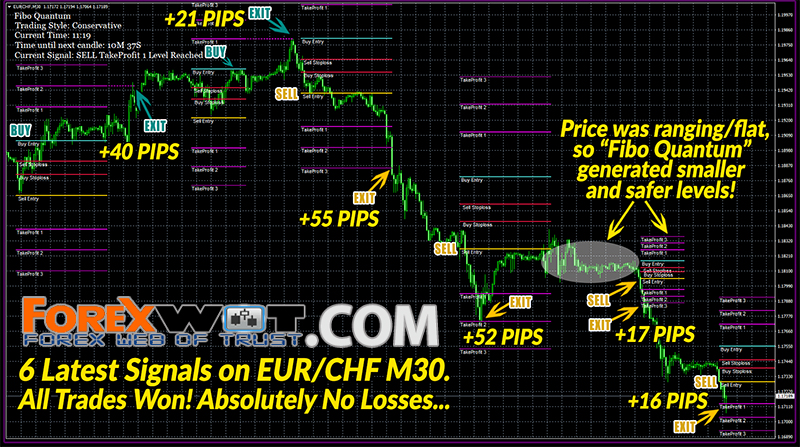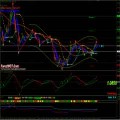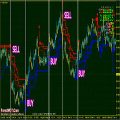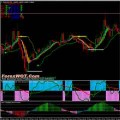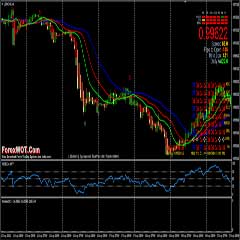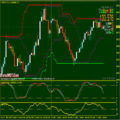Forex is not a get rich quick scheme! It’s a great investment with a potential of much higher returns than any other, but it is not a way of striking sudden gold.
Most retail traders getting into forex trading make the mistake of thinking that it is an easy route to riches. They are sold useless strategies which only serve to benefit the brokers and trading coaches; they are taught Technical Analysis, which is really no better than astrology.
They ignore the use of quantitative/analytical methods and risk management. They just do not realize how complex and dangerous the markets are. Because they don’t have core math skills, they are ill-equiped to trade in the markets. Lastly, they ignore computer programming and automation. These are the reasons why most retail traders fail miserably.
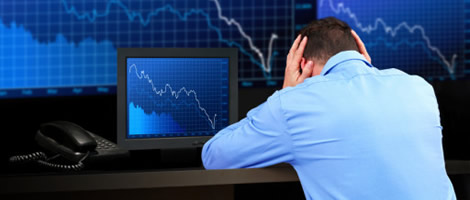
The following is copied directly from my (mostly outdated) book that I wrote in 2009. It should provide some insight on your question.
Chapter 3: The Mistakes We Make
When we first learn trading, we tend to make several mistakes that keep us from having any kind of success. In this chapter I will discuss the ones that have affected me the most. Some of these I still struggle with.However, most of the ones I struggle with are ones that an EA can keep me from experiencing.
MISTAKE #1: Too much leverage
As of this writing, some brokers such as FxPro will let you trade 1 full lot for every $200 in your account. This is 1:500 leverage! As exciting as it sounds, it is the easiest way to drain your account.
For example,….
Suppose I have $10000 in my account at 1:500 leverage. I could place a trade of 25 lots and only tie up half of my available equity.
At this size,each pip would be worth $250. If you bought EUR/USD with a 3 pip spread, it would cost you $750 just to place the trade. Think of it this way, with $5000 tied up in the trade and $5000 free equity, each pip represents FIVE PERCENT of your available equity! That means you would get a margin call after losing just 20 pips!
I have a rule about leverage. I NEVER trade more than 1:10 leverage. That means $10000 cash in the account for each 1 lot I trade.
That being the case, starting with $500 means you can trade 0.05 lots, which amounts to about $0.50 per pip. That only leaves room for about a 500 pip loss. That means high risk at first, but if you can think of it as a $500 total risk, then it won’t be so scary. I’ll talk more about this later.
MISTAKE #2: Getting in NOW. Not waiting
There are two problems that most people have when it comes to patience as it pertains to trading. Especially those who trade the 4-hour or daily charts.
- Problem 1: Not waiting to enter
It could take weeks for a strong entry signal to occur, and we don’t want to wait that long. We don’t want to wait at all! We want to get in right now.
So we guess what the next signal is going to be and trade in such a way that when that signal comes, we are already in position to take advantage of the situation. Let me tell you right now THIS DOESN’T WORK.
- Problem 2: Not waiting to exit
Once a trade is placed, watching the price fluctuate up and down 20, 30, 50 pips will drive you to drink. Heavily. If you don’t know your exit when you place a trade then it might do you some good to step away for at least an hour before making any decisions.
My EA, the AME Cross Trader, places a trade then waits for one complete bar to pass before deciding if it’s time to set take-profit or begin a trailing stop. Also, when you place a trade, there’s only a 50% chance that the trade will move in your favor right from the beginning.
It’s easy to panic and think you were wrong when the trade immediately goes against you. But if you determined the trend correctly, the trade should come back in your favor. Of course you will endure some drawdown while the trade is open, but if your account can handle the drawdown you should be ok.
Someone once said “Good things come to those who wait”. In forex this is true wisdom. Being impulsive will cost you dearly. Knowing when to wait and when to “jump ship” will save you a lot of grief (and money) in the long run.
- Mistake #3: Tight fixed stops
When I first started trading, I would place an order with a 20 or 30 pip stop loss. In almost every case, my stop would be taken and the price would immediately go in my favor and take off in my desired direction. Without me. I would get frustrated, place a new market order with a 30 pip stop loss and watch it happen again and again.
Instead of gaining 100 pips or more in a single trade, I would lose 100 pips or more in multiple attempts to catch a move in my chosen direction. Assuming you have calculated the trend correctly,you need to be willing to endure some drawdown before the price moves in your favor.
This is especially true if you are trading 1-hour charts or higher. If you set your stop loss at the time of placing your order, then there is a great chance that you will be taken out of the trade with a loss, even if the price moves in the direction you were aiming for.
Mistake #4: Not knowing your exit
Before I get into this, I have to admit that this is a very tricky and elusive thing that depends much on your attitude towards winning.Let me tell you a story that demonstrates my point…
A man and his new bride were celebrating their honeymoon at a casino. After they had consummated their marriage, the bride fell asleep and the husband was wide awake, so he went downstairs to the casino with $2 that was left over from gambling.
He went to the roulette table and placed the $2 on a single number and won, leaving him with $70. He placed the $70 on a new number and won again, leaving him with $1750. This amazing luck continued over and over with black-jack, poker, and other games until he was in possession of over $30000. Finally, he bet all his money on roulette and lost it all in a single bet.
The man went back upstairs to his hotel room and when he shut the door, his wife woke up. When she asked where he had been, he told her he couldn’t sleep so he went downstairs to gamble. When she asked how he did, he said “I lost $2”.
In this same manner, I can place a trade, risking a fixed amount of money. If I lose then I have lost the amount I was willing to lose and nothing more. If I am ahead by, say, 100 pips, I can begin a 70 pip trailing stop. This way I have locked in at least 30 pips profit.
This becomes my expectation. Nothing more….
If the price continues to move in my favor then I might end with more than 30 pips profit and have a big smile on my face. But if the price immediately goes against me and stops me out, I can’t complain about the 70 pips I just gave up. I knew my exit and that’s exactly what I got.
My Expert Advisor (The AME Cross Trader) does something unusual in terms of locking in profit, which I will explain briefly here.Suppose it places a buy order at the open of a new bar.
The assumption is that we are in an uptrend. At the open of the next bar, the AME Cross Trader looks to see if the high of the bar that just completed is at least a certain number of pips above my opening price. If this is the case then I set that high as my limit.
The reason is that if we are indeed in an uptrend, unless something unusual happens, the price will reach this level again. I have found this to be true as much as 14 out of 15 times in some currency pairs. By doing this I can capture profits earlier than if I use a trailing stop, then be ready to trade again immediately.
To summarize, when I say “know your exit” I don’t necessarily mean to know before you place your trade. The AME Cross Trader, for example,waits for at least one full bar to complete before deciding how much profit can be hoped for.
Sometimes it takes more than a single bar and tries to set a trailing stop to lock in profit while trying to decide where the ideal exit is.
The point I am making is that you should not wait too long after a trade is placed to decide to take profits. Trailing stops are nice but limit orders sure feel better when they are hit.
There is a psychological reason for this. Stoploss, even when profit is locked, is hit when the trade is going against you. Limits are hit when the trade is going in your favor. The latter just feels better than the former. 🙂
Mistake #5: Trusting an EA for the long term
This is another touchy subject. I do believe that an EA can be used for long term growth and cash flow. However, I am not in a position to use one of those.
The reason I say this is because at this time I only have a small amount of money to trade with, and this book is about the process of turning $500 into $1000000. A “long term” EA cannot do this with $500. A long term EA will work wonderfully with $50000 or $100000 and create a nice cash flow that we might be able to live on.
Unfortunately, the people I wrote this book for do not have $50000 laying around that they can deposit into their forex accounts. We need to rely on a different method that will enable us to build up to, say, $50000, $100000 or even $1000000 so that we can then apply a stable, low-risk EA that will pay our bills for the rest of our lives.
Mistake #6: Using a demo account to simulate real trading
This is where most of my opposition comes from. Everyone says you should use a demo account before you start trading live. I say “yes” but not for the sake of “pretending” to trade a live account. There are some critical elements missing from demo trading that cannot be simulated. We’ll get to that in a bit. Here’s what you should use a demo account for…
- Forward testing your EA:
Forward testing of your EA should be done for a time on a demo account, to make sure that you have all your EA parameters set correctly, and to make sure the EA behaves the way you expect it to, especially if you are testing out a new broker.
Make sure that the demo account is with the same broker that you have your live account with. This way there will be (almost) no surprises when you switch from demo to live trading.
- Mastery of manual trading:
There’s going to be times when you are trading manually, even if it is only to intervene with a decision that your EA makes. Since this is the case, you need to be good at placing, modifying and closing orders. So good that you can do it in your sleep.
A live account is no place for you to place an order of 5 lots when you intended to place a 0.5 lot order, or to place a buy order when you intended on placing a sell order. These types of “rookie” mistakes can be easily overcome on a demo account.
Also, there are two really important things that absolutely cannot be simulated on a demo account. I know many people who disagree with this but this has been my personal experience. I don’t think yours will vary 🙂
- Draining and replenishing your account:
As I mentioned in a previous chapter, I got so accustomed to draining demo accounts and opening new ones, that it affected my live trading drastically.
If you drain a demo account, you can simply open a new one with however much money you desire. If you drain a live account, you have to spend weeks or even months saving up enough money to make another deposit into the account so you can trade again.
Also, your confidence in trading is diminished, your likelihood to panic when a trade goes against you increases, and your overall judgement is impaired.
If you use a live account with tiny trade sizes (0.01 lots for example) then you can experience all of the emotions that go with winning and losing real money, and learn gradually and inexpensively to deal with them until you can overcome them. People will argue “why risk real money to learn a strategy?”, but I say you’re risking even more “real” money by doing it with a demo account.
- Watching the pips come and go:
With a demo account you can place an order of 5 lots and watch your pips come and go with almost no emotion. But on a live account, an order of 0.1 lots means watching your hard earned dollars come and go over and over, taking you on an emotional roller coaster ride that might eventually cause you to jump off the ride before it is safe to do so.
The roller coaster is a good analogy because if you try to jump off anytime before the ride is over, you will get hurt. Badly. But if you just wait until the ride is over then no harm will come to you. Such can easily be the case with forex trading.
Mistake #7: Back testing and optimizing on a demo account
Never, ever, ever use a demo account for back testing or optimizing an EA. Always use a live account. Always use THE live account that you will be running your EA on.
Always make sure you are logged into the live account before you run a back test or optimization. The reason for this is that the back tester and optimizer both appear to use the MarketInfo() data from the last account you were logged into.
Many brokers do not have identical MarketInfo() values between their live and demo accounts. If you don’t know what that means then just trust me on this one.
It might not seem like much but in back test, a slight difference in pip size, margin level, stop out level, etc. could make the difference between quadrupling your live account or draining it. Or it could mean the difference between all of your orders working on demo but failing to execute on live.
Mistake #8: Never taking profits
Taking profits to me is more than just closing a profitable order. This is probably the most likely reason you, or the majority of traders cannot grow their accounts.
A new concept; Withdrawals
When trading forex, there is misconception about the term”withdrawal”. People are convinced that if they take out some of their money, their EA or their trading style will be hindered because they cannot take advantage of larger trade sizes.
From my perspective, withdrawing money from your account is something that will happen with or without you. It is a race between you and your broker to see who can “withdraw” the money from your account first.
Here is an example: You are a trend follower and you increase your account by 200% over a month’s time. Then the trend changes to work against you. One of two things WILL happen. The reversal will “withdraw” most or all of your money and give it to the broker, or YOU will “withdraw” your money and keep it for yourself.
If you can repeatedly withdraw money, while keeping enough in the account to continue trading, then you are already well on your way towards a career in forex trading. If you take money out of your account, you cannot lose that money by trading.
This is what the brokers fail to tell you when they lure you in to open accounts with them. It is not in their best interest for you to withdraw money. It is in their best interest for THEM to withdraw your money. And they work hard to do this.
Summary
Once you can keep from making these mistakes, then you will have taken your forex trading to the next level.

